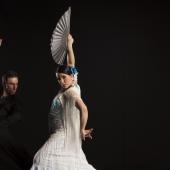Pina Bausch Dance Theater
Pina Bausch is a pioneer of the dance theater and one of the most influential choreographers of the 20th century. Her artistic style, which she developed with her company, uniquely combined dance with drama and artistic performance. We introduce the dance icon Pina Bausch.
She was born as Philippine Bausch in Solingen in 1940. Her parents ran a restaurant in which Pina already helped with her siblings in childhood. From early childhood days, she observed people. Trying to understand what affected them in their deepest matter. In some of her later performances, this childhood atmosphere was picked up. People come, go, and tell about their desire for happiness.
At the age of 14, Pina Bausch started a dance education at the Essen Folkwang Hochschule under Kurt Jooss. At that time, Jooss was a major representative of German dance modernism around the Second World War. At the Folkwang Hochschule, other arts such as opera, music, drama, sculpture, painting, photography, design, and many more were taught those days. This was probably the reason for Pina's openness with regards to her pioneering choreographies.
The girl received a scholarship in 1958 and went to the famous Juilliard School of Music in New York where she immersed herself in the depths of the American Modern Dance. The metropolis in the USA was then the dance mecca of the world. Inspired by the artistic diversity of New York, she extended her stay for another year.
Kurt Jooss asked Pina to come back to Essen to revive the Folkwang Dance Studio. As there were too few pieces for the ballet, Pina herself began to choreograph. Her first performances "Fragment" or "In the Wind of Time" were already awarded back then. The Wuppertal director Arno Wüstenhöfer - the director of the Wuppertal Ballet - hired her for the season 1973/1974. She then quickly renamed the ballet to dance theater. Here, her style changed gradually. With the performances "Seven Deadly Sins" and "Blaubart", Pina Bausch for the first time combined singing, pantomime, language and everyday gestures.
Pina Bausch's approach in view of the cooperation with her company was unique. She worked very close together with her dancers and included them in her collages and montages. Her plays were about very personal, but also universal topics such as fear, anger, death, being left, longing, love and the relationship in between the sexes. While her early plays still propagate a bit more hopelessness and coldness, these negative feelings make way for an ever-increasing vitality in later performances.
Pina Bausch died in June 2009. At that time, Wim Wenders began to shoot a film in 3D technology about her. The film premiered at the Berlinale 2011, thanks to the great collaboration with Pina Bausch's company. Co-founder Ronald Key and her joint son Salomon Bausch founded the Pina Bausch Foundation for the artistic legacy of the star choreographer. Her plays are beeing performed at the Tanztheater Wuppertal until today.




